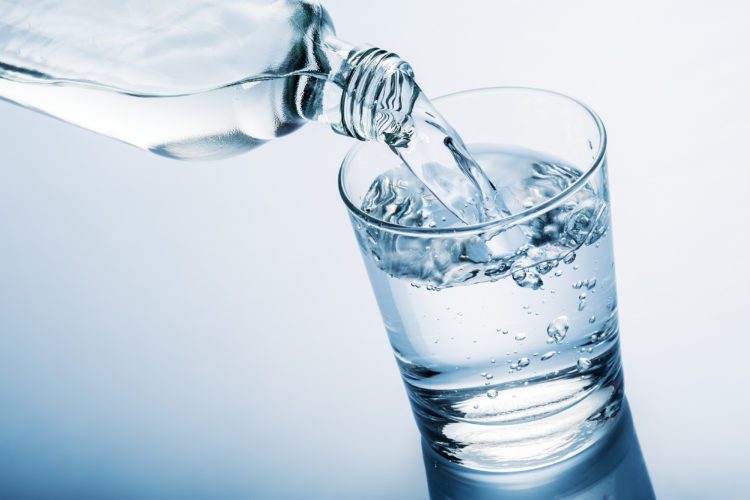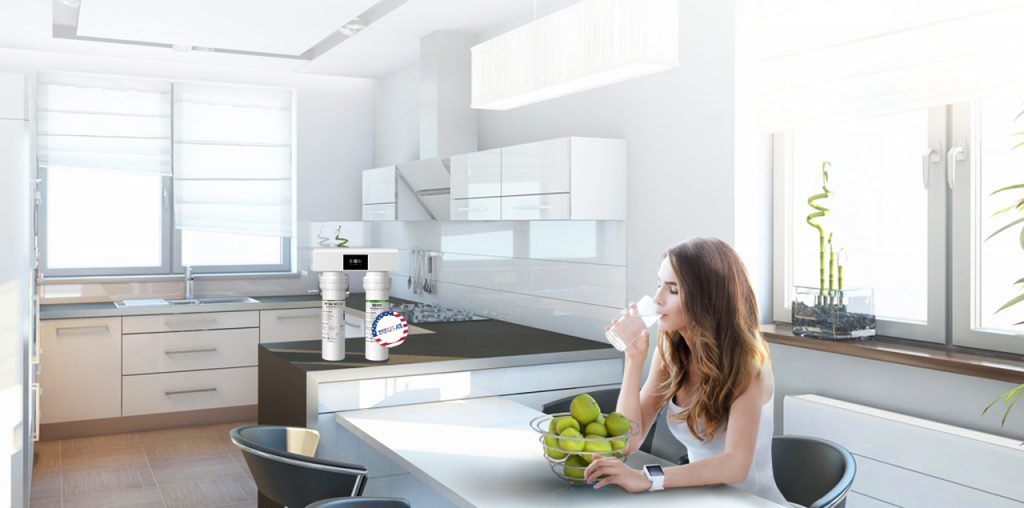Point-of-Use (POU) devices treat water at the point of consumption. The technology provides the final barrier to the contaminants of concern before the water is consumed or used. Some technologies that are commonly applied at the point of use, but may also be applied at the point of entry, include the following:

- Activated Carbon
- Reverse Osmosis
- Ultraviolet (UV) Technologies
- Distillation
Activated Carbon
Activated carbon is a widely used filtration substance that targets various volatile organic compounds, such as benzene, trichloroethylene, and various pesticides and petroleum related compounds. Maintenance is as simple as swapping out a cartridge once or twice a year. Activated carbon may be granular or in a solid block. Some carbon block filters can have greater filtration capabilities that can remove lead, asbestos, and some microbes out of the water. Activated carbon is may be used in gravity devices (such as countertop pitchers) and inline filters.
Find products certified by WQA to NSF/ANSI 42, WQA S-200, and NSF/ANSI 53. There are also showerhead filtration systems certified to NSF/ANSI 177 for reduction claims.
Reverse Osmosis
Reverse osmosis (RO) systems force water, under pressure, into a module that contains a semipermeable membrane and a number of other filtration steps. A typical RO system has a prefilter designed to capture larger particles, chlorine, and other substances; a semipermeable membrane that captures more contaminants; an activated carbon filter that removes residual taste, odor, and some organic contaminants; and a storage tank to hold the treated water for use.
Whole-house (point-of-entry) RO systems exist, but they are more commonly installed near the point-of-use, such as on a countertop or under a sink. They’re great for treating water for cooking and drinking, but they don’t usually produce large amounts of treated water — more like 3 to 10 gallons a day. For that reason, typically people choose to install RO-treated faucets in the most popular areas of the home such as kitchens and bathrooms, as opposed to installing it for every drinking tap.
Just like any other kind of filter technology, RO systems require regular maintenance. That includes periodically replacing the unit’s prefilters, postfilters, and membrane modules.
Find reverse osmosis systems that are certified to NSF/ANSI 58 and WQA S-300.
Ultraviolet (UV) Light
Disinfecting of water with ultraviolet (UV) light has long been popular for commercial use, and is becoming more common in homes. UV systems expose water to light at just the right wavelength for killing microbes. It’s a way to kill bacteria, viruses, fungi, protozoans and cysts that may be present in the water. The effectiveness of the system depends on the strength and intensity of the light, the amount of time the light shines through the water, and, of course, the quantity of particles in the water in the first place. The light source must be kept clean and the UV lamp replaced periodically.
UV light treatment can’t remove gases, heavy metals and particulates. For this reason, higher-end systems may include additional filtration such as activated carbon. If so, that means you’ll need to occasionally clean or replace those filters or perform other maintenance.
Find certified UV systems by searaching NSF/ANSI 55.
Distillation
Distillation is one of the oldest water-purification methods around. It can effectively remove minerals, most chemicals and many bad tastes from tap water. In a distillation system, the water is heated until it reaches its boiling point and begins to vaporize. The vaporized water is then fed into a condenser that cools the steam and converts the water back to liquid form. A vent to discharge gases is a common feature, and these units may also include an activated carbon filter to pull out even more contaminants. Most home distillers produce only small amounts of treated water daily. They require periodic cleaning and descaling to remove mineral buildup.
https://www.wqa.org/Improve-Your-Water/Solutions/At-the-Faucet


